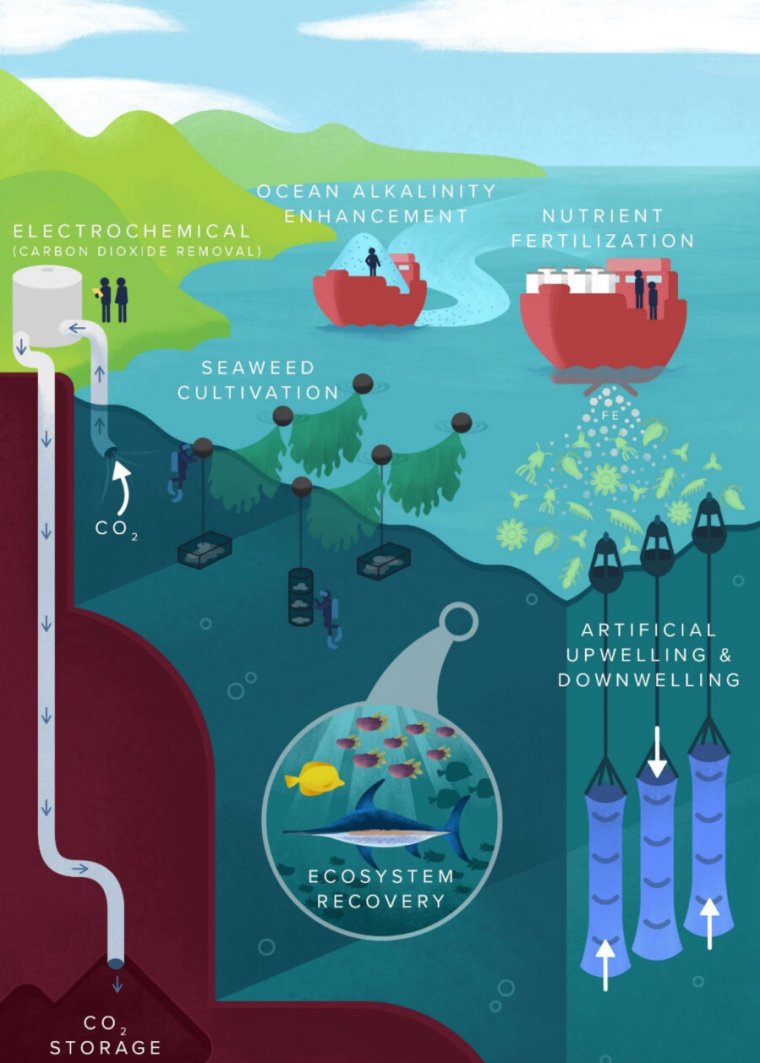There’s a lot we don’t know about ocean CO₂ removal

Enlarge (credit: National Academy of Sciences)
It's clear from climate science that we need to drop greenhouse gas emissions to zero as quickly as possible. But it's also clear from our slow progress that we could use some help with those emissions. One thing that can help is carbon dioxide removal, as it allows us to reach net-zero emissions even as some difficult-to-solve emissions remain.
Carbon removal on land-including obvious techniques like reforestation-gets a lot of attention. Carbon removal in the ocean, on the other hand, has seemed a bit pie-in-the-sky, even though the ocean already soaks up more CO2 than land ecosystems do. A new National Academies of Sciences, Engineering, and Medicine report takes up the challenge of outlining what we would need to learn to make some theoretical techniques for boosting ocean uptake a reality-or to rule them out. The report follows 2015 and 2019 reports that set the stage for carbon dioxide removal science more broadly.
Boosting productivityThe report's goal is to provide some direction, both for scientists designing studies and for funders (like the National Science Foundation) setting priorities. The report is the work of a sizable group of scientists organized by the National Academies, with funding provided by a sponsorship from the ClimateWorks Foundation.
Read 10 remaining paragraphs | Comments